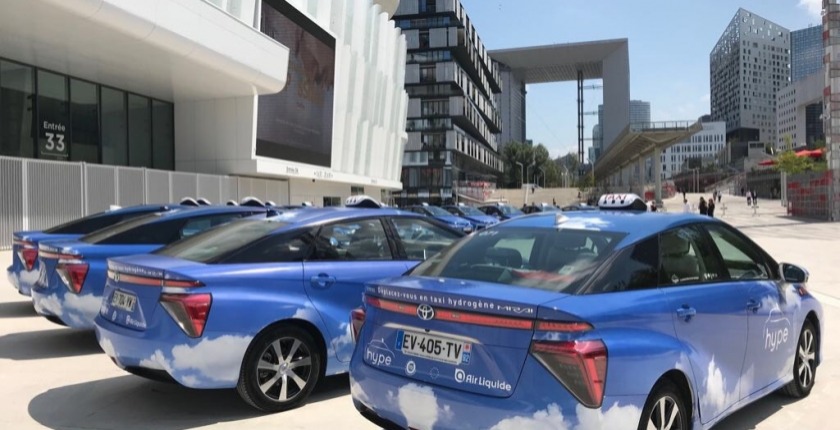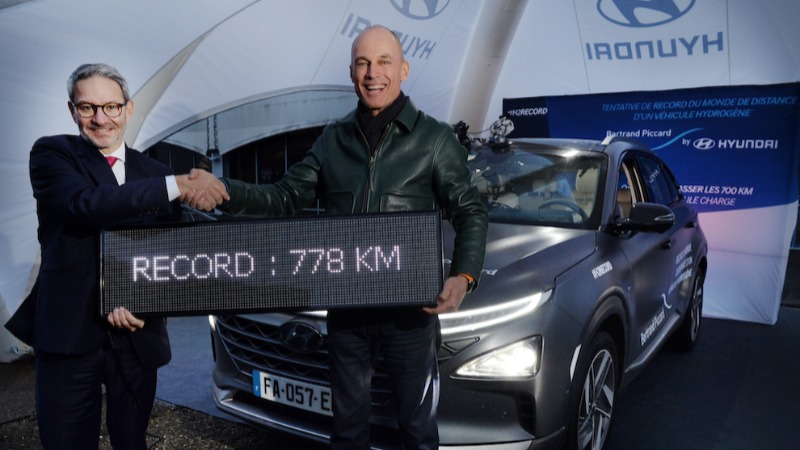1000 Solutions - August 22, 2019
Hype, hydrogen taxis to fight air pollution


Written by Tristan Lebleu 3 min read
No emissions. No pollution. Could these hydrogen taxis be the future of urban mobility?
There is a global consensus that the transport sector needs to be decarbonized. However, the real debate is how the world will achieve this challenge. Most certainly, Fuel Cell Electric Vehicles (FCEV) - most commonly known as hydrogen vehicles - will play a crucial role in the future of clean mobility, among other solutions.
To tackle the issues of pollution and traffic in Paris, Mathieu Gardies decided to launch a company of electric taxi vehicles in the French capital city in 2009. In 2015, while many first tests with battery electric vehicles (BEV) had failed, the first hydrogen-powered vehicles arrived on the market. Mathieu decided to bet on this new technology, and launched Hype during COP21: the first 100% hydrogen taxi fleet.
In an interview, Mathieu Gardies highlights that "battery electric vehicles can not be generalized for taxis in Paris. This corresponds to a few percent but not a solution that can be democratized on a large scale for this activity.The real difference from the battery electric vehicle is that there is no need to stop the vehicle. It's easier to tell a driver to go to hydrogen because it will not change the way he works". Indeed, hydrogen vehicles have a big advantage on their battery electric counterparts: they can be refuelled in 3 to 5 minutes. They also have a much wider range, up to 500 kilometers. Both characteristics make hydrogen a perfect solution for taxis.
However, FCEVs also have downsides which explain their slow uptake - there are currently 11’000 hydrogen vehicles on the road worldwide. One of them is their high price. Hyundai, Toyota, and Honda are the main manufacturers of FCEVs, and most models are more expensive than internal combustion engines, while hydrogen prices at stations is currently equivalent to fuel. However Hype deals with this issue by pooling vehicles on several drivers. Thanks to the intensive use of Hype vehicles, the company generates profits. "These operational gains make it possible to absorb some of the additional costs" explains Mathieu. Most experts also believe that the prices of vehicles and hydrogen will drop as the industry develops.
Another issue has slowed down the adoption of FCEVs: hydrogen stations. There are currently no more than 337 stations worldwide, most of which are in Japan and California. Hydrogen stations are costly and industrials are still reluctant to invest in such infrastructure with the low number of vehicles currently on the road. On the other hand, drivers are still afraid to buy hydrogen vehicles because of the low number of stations, thus creating a vicious circle. To tackle this issue, Mathieu created Hype in partnership with Air Liquide, the French industrial leader in hydrogen. Hype’s fleet guarantees sufficient demand for the 4 Air Liquide stations in and around Paris.
Four years after its creation, Hype counts 110 taxis operating in Paris, making it the largest fleet of FCEVs in the world and has announced it will grow its fleet to 600 hydrogen vehicles by 2020, thanks to a recent partnership with Toyota. Since 2015, Hype taxis have accumulated 4 millions of km, avoiding approximately 2 tonnes of Nitrogen oxides (NOx). Thanks to its positive impact on pollution and its strong economic model, it was awarded the Solar Impulse Efficient Label in May 2019.
Fifty policies or targets have been introduced globally to support the development of hydrogen technologies and infrastructure, leading the International Energy Agency (IEA) to describe 2019 as a year of “unprecedented momentum” for hydrogen. According to the Hydrogen Council, hydrogen could fuel 10 to 15 million cars worldwide by 2030.

Written by Tristan Lebleu on August 22, 2019


